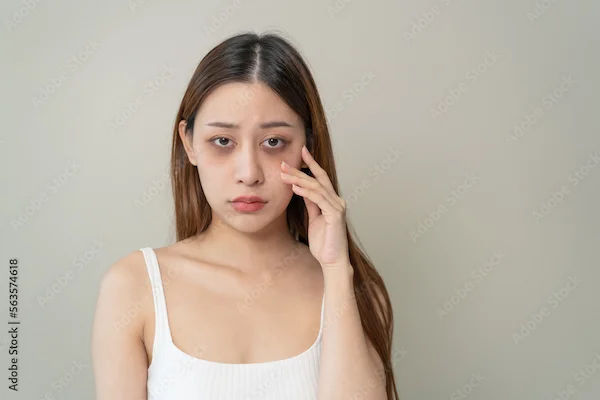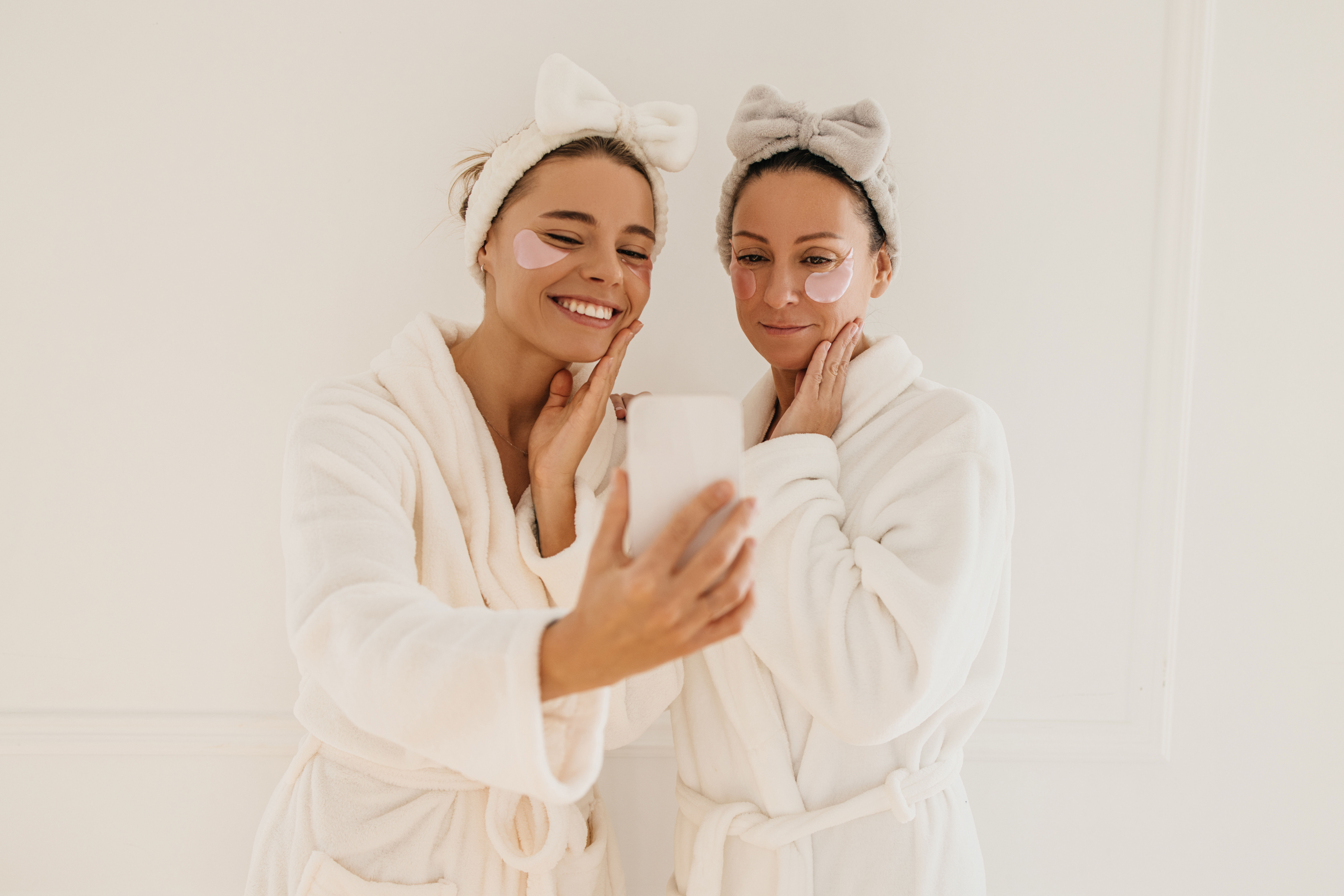Best Home Remedies to Remove Dark Circles Naturally
Say goodbye to tired eyes! Discover the best home remedies and natural treatments to effectively fade dark circles and under-eye bags. Learn simple, effective DIY tips today!

Written by Dr. Siri Nallapu
Reviewed by Dr. Dhankecha Mayank Dineshbhai MBBS
Last updated on 11th Nov, 2025

Introduction
If you’re tired of looking tired, you’re not alone. Dark circles are common and can make you look fatigued or older than you feel. The good news: a few simple, evidence-informed dark circles home remedies, consistent eye care, and smart beauty tips can visibly brighten your under-eye area. While not every cause can be “cured” at home, many people see improvement by targeting the right habits and using gentle, safe at-home approaches.
Below, you’ll learn what causes dark circles, how to figure out your main triggers, which natural and over-the-counter steps actually help, what to avoid, and when to speak with a clinician for more options.
What causes dark circles under the eyes?
Understanding the cause helps you choose the best fix. Dark circles can result from one or more of the following:
• Pigmentation: Extra melanin (skin pigment) makes the under-eye skin look darker. Sun exposure and inflammation can worsen this.
• Vascular/congestion: Blood vessels show through thin under-eye skin, or fluid retention and nasal congestion make the area look bluish or purple (“allergic shiners”).
• Thin skin and aging: As we age, skin thins and fat volume shifts, making vessels and hollows more visible.
• Shadows/structure: Natural facial anatomy (like deeper tear troughs) creates shadows that read as darkness even without pigmentation.
• Lifestyle factors: Poor sleep, smoking, high-salt diet, alcohol, and excessive sun exposure can accentuate darkness and puffiness.
• Irritation and rubbing: Allergies, dermatitis, and frequent eye rubbing can lead to under-eye discoloration over time.
How to tell what type you have
• If your circles look brownish and don’t change much with light or pressure, pigmentation may be the main driver.
• If they look bluish/purplish and worsen in the morning or during allergy seasons, vascular or congestion-related changes are likely.
• If darkness looks worse in certain lighting or angles, shadows from hollows may be a bigger factor.
• If skin looks thin and crepey with visible veins, thinning skin may be at play.
When to see a clinician promptly?
• Sudden swelling, pain, redness, or one-sided changes
• Any changes in vision
• Persistent itching, rash, or flaky skin around eyes
• New, severe nasal congestion, frequent nosebleeds, or sinus pain
• If dark circles significantly affect your confidence and home strategies haven’t helped after 8–12 weeks
Consult a Top General Physician
Dark circles home remedies that actually help
These at-home strategies focus on safety and evidence-informed habits. They won’t transform everyone overnight, but consistent use often brings visible improvement.
1) Use a cold compress daily
Why it helps: Cold temporarily constricts blood vessels, reduces swelling, and can make bluish tones less visible.
How to do it safely?
• Apply a clean, cold washcloth or gel eye mask for 5–10 minutes, once or twice daily.
• You can chill clean metal spoons and gently press them onto closed lids for a minute at a time.
• Keep pressure light; never apply ice directly to skin.
2) Protect your skin from the sun (every day, all year)
Why it helps: UV exposure stimulates pigment and thins collagen over time, making darkness more visible. Daily sun protection prevents worsening and can gradually improve tone.
Do this:
• Use a broad-spectrum sunscreen SPF 30+ on the under-eye rim and surrounding areas (avoid getting product in the eyes).
• Wear UV-protective sunglasses and a wide-brim hat when outdoors.
• Reapply sunscreen every 2 hours outdoors, and after sweating.
3) Prioritize sleep and a steady schedule
Why it helps: Inadequate or irregular sleep can accentuate under-eye discoloration and puffiness for some people.
Try:
• Aim for 7–9 hours of sleep per night, at consistent times.
• A relaxing wind-down routine (dim lights, no screens 1 hour before bed).
• Keep your bedroom dark, cool, and quiet.
4) Elevate your head while sleeping
Why it helps: Slight head elevation reduces morning puffiness from fluid pooling.
How:
• Use an extra pillow or a wedge pillow so your head is slightly elevated.
5) Manage allergies and nasal congestion
Why it helps: Allergies can cause congestion and rubbing, leading to vascular “allergic shiners” and irritation.
Steps to try:
• Saline nasal rinses to ease congestion.
• Keep indoor air clean with regular dusting and, if helpful, a HEPA filter.
• Avoid rubbing your eyes; use a cool compress for itch.
• Consult a healthcare professional about allergy management if symptoms persist.
6) Gentle skincare ingredients with evidence
You can use over-the-counter products at home to improve hydration, texture, and uneven tone.
Useful ingredients:
• Vitamin C (ascorbic acid): Helps brighten pigmentation and supports collagen.
• Niacinamide: Helps even tone and calm redness.
• Hyaluronic acid: Hydrates to plump fine lines and reduce crepey look.
• Caffeine (in eye gels/serums): May temporarily reduce puffiness via mild vasoconstriction.
Tips:
• Apply a pea-sized amount of product for both eyes, patting gently along the orbital bone (avoid direct contact with eyes).
• Start every other day to minimize irritation. If stinging or redness occurs, stop and seek advice.
• Pair with daily sunscreen for best results.
7) Lifestyle upgrades that reduce puffiness and dullness
• Hydration: Sip water regularly throughout the day.
• Nutrition: Emphasize fruits, vegetables, lean protein, and whole grains for overall skin health.
• Limit alcohol and high-salt foods that can promote fluid retention.
• Don’t smoke; smoking can thin skin and dull complexion over time.
8) Smart, safe cooling soothers (optional)
• Chilled cucumber slices or chilled, damp green tea bags: The primary benefit is the cold, which reduces puffiness; caffeine in tea may offer a mild additional effect. Evidence is limited, so consider these comfort measures rather than cures.
• Always keep them clean, use closed eyes for 5–10 minutes, and stop if any irritation occurs.
9) Be gentle with the eye area
• Remove makeup with a mild, fragrance-free remover. Avoid harsh rubbing.
• Use fragrance-free moisturizers. If you have eczema or dermatitis around the eyes, talk to a clinician before starting new products.
10) Beauty tips to instantly brighten
• Makeup won’t treat root causes, but it can neutralize darkness quickly and safely.
• Color correctors: Peach or orange correctors help neutralize bluish or purple tones. Choose a lightweight formula.
• Concealer: Use a thin layer just over the dark area, not the entire under-eye. A satin or slightly radiant finish looks most skin-like.
• Technique: Apply in thin layers, blend gently with a damp sponge or fingertip tapping motion. Finish with a tiny amount of translucent powder if needed to prevent creasing.
• Shade: Match concealer to your skin tone after color correction. Avoid going too light, which can look gray or ashy.
Daily eye care habits to reduce dark circles
Consistency is key. Try this simple routine:
Morning
• Cool compress for 5 minutes.
• Vitamin C or niacinamide serum (if your skin tolerates it).
• Lightweight moisturizer, then broad-spectrum SPF 30+.
• Sunglasses outdoors.
Evening
• Gently remove makeup, no rubbing.
• Hydrating eye gel or a simple, fragrance-free moisturizer.
• Head elevation when you sleep.
Weekly
• Declutter sleep schedule: Set bedtime/wake time alarms.
• Wash pillowcases and clean makeup brushes to reduce irritation risk.
• Note triggers: Track allergies, new products, or salty meals that worsen puffiness.
What to avoid around your eyes?
The eye area is delicate.
Skip:
• Lemon juice, apple cider vinegar, or undiluted essential oils: These can irritate or burn the skin.
• Raw potato slices directly on skin: Potential for irritation or contamination.
• Aggressive scrubs or high-strength acids near eyes: Risk of damage and increased pigmentation.
• Microneedling at home near the eyes: Safety risks without professional guidance.
When home care isn’t enough?
If you’ve tried consistent home strategies for 8–12 weeks without the results you want, talk to a dermatologist or qualified clinician. Depending on the cause (pigmentation vs. volume loss vs. vessels), in-office options may include:
• Prescription topicals for pigmentation
• Chemical peels (gentle, eye-safe types)
• Laser or light-based treatments
• Microneedling performed by a professional
• Fillers to soften hollows (if shadows are the main issue)
These treatments require an individualized assessment for safety and realistic expectations.
A simple 4-week plan to test what works
• Week 1: Start daily sunscreen, sleep schedule, and cold compress. Take “before” photos in the same lighting.
• Week 2: Add a gentle brightening serum (vitamin C or niacinamide) every other morning; elevate your head at night.
• Week 3: Focus on triggers: reduce salt and alcohol, avoid rubbing, and manage congestion; continue sunscreen and cold compress.
• Week 4: Evaluate progress with photos. If you see improvement, continue. If not, consider a clinician’s input to tailor next steps.
Consult a Top General Physician
Consult a Top General Physician

Dr. Dhankecha Mayank
General Practitioner
6 Years • MBBS
Hyderabad
Apollo 24|7 Clinic - Telangana, Hyderabad

Dr. Mohammed Kamran
General Practitioner
5 Years • MBBS, FIDM
Nashik
Apollo 24|7 Clinic - Maharashtra, Nashik

Dr. M L Ezhilarasan
General Practitioner
6 Years • MBBS
Visakhapatnam
Apollo 24|7 Clinic - Andhra Pradesh, Visakhapatnam

Dr. Rajib Ghose
General Physician/ Internal Medicine Specialist
25 Years • MBBS
East Midnapore
VIVEKANANDA SEBA SADAN, East Midnapore

Dr. Tanzeem Shajahan
General Physician/ Internal Medicine Specialist
7 Years • MBBS, MD (General Medicine)
Bengaluru
Medwin multispeciality clinic, Bengaluru
Consult a Top General Physician

Dr. Dhankecha Mayank
General Practitioner
6 Years • MBBS
Hyderabad
Apollo 24|7 Clinic - Telangana, Hyderabad

Dr. Mohammed Kamran
General Practitioner
5 Years • MBBS, FIDM
Nashik
Apollo 24|7 Clinic - Maharashtra, Nashik

Dr. M L Ezhilarasan
General Practitioner
6 Years • MBBS
Visakhapatnam
Apollo 24|7 Clinic - Andhra Pradesh, Visakhapatnam

Dr. Rajib Ghose
General Physician/ Internal Medicine Specialist
25 Years • MBBS
East Midnapore
VIVEKANANDA SEBA SADAN, East Midnapore

Dr. Tanzeem Shajahan
General Physician/ Internal Medicine Specialist
7 Years • MBBS, MD (General Medicine)
Bengaluru
Medwin multispeciality clinic, Bengaluru
More articles from Dark Circle
Frequently Asked Questions
1) How long do dark circles home remedies take to work?
Most people need 6–8 weeks of consistent routine (sunscreen, sleep, cold compress, gentle skincare) to judge results. You may see quick improvements in puffiness within days, while pigment and texture changes take longer.
2) Do cucumbers or tea bags actually work?
They can feel soothing and the cold helps reduce puffiness temporarily. Caffeine in tea may add a mild effect. They don’t remove pigment or structural shadows, but they can be part of a comfort-based routine if used safely and hygienically.
3) Are dark circles a sign of a health problem?
Usually, dark circles are related to genetics, structure, lifestyle, sun exposure, or allergies. If you notice sudden changes, pain, vision issues, a persistent rash, or other unusual symptoms, seek medical advice to rule out underlying problems.
4) What ingredients help with pigmentation under the eyes?
Vitamin C and niacinamide are commonly used over-the-counter options and are generally well tolerated when applied carefully around the eye area (not into the eye). Use sunscreen daily to prevent further darkening. For stubborn pigmentation, a dermatologist can recommend prescription options or procedures.
5) Can dark circles be removed permanently?
It depends on the cause. Pigmentation may improve significantly with sun protection and brightening skincare; vascular and structural causes are harder to “remove” at home and may need professional treatments. Most people benefit from a combination of prevention (sun protection, sleep, no rubbing), supportive skincare, and, if desired, targeted in-office procedures.




